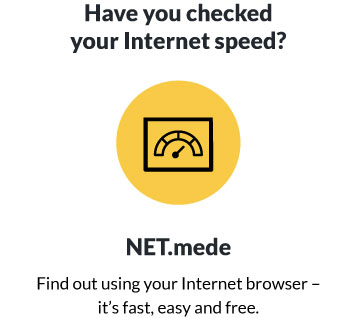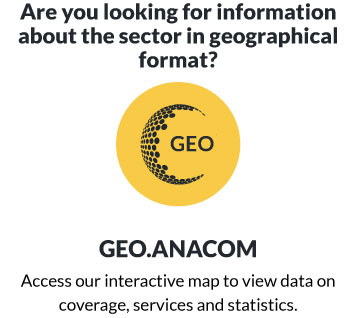ANACOM consultation procedures
1. Introduction
Article 6 of Directive 2002/21/EC, of the European Parliament and the Council, of 7 March 2002, regarding a common regulatory framework for electronic communications networks and services, establishes a consultation and transparency mechanism to be followed by the national regulatory authorities in the adoption of measures that have a significant impact in the relevant market.
Law no. 5/2004, of 10 February, which, transposing directives from Revision 99, approves the electronic communications legal regime (Electronic Communications Law), establishes in its article 8 the general consultation procedure to be observed by ANACOM within the new regulatory framework.
In accordance with this procedure, ANACOM must give the interested parties, in a deadline to be established for that purpose which shall not be lower than 20 working days, the possibility for them to give their opinion about draft measures to be adopted in the exercise of their duties foreseen in the Law having a significant impact in the relevant market.
Pursuant to Law no. 5/2004, of 10 February, ANACOM must publicise the adopted consultation procedures, being this one the object of this document.
2. Other consultation procedures
The Portuguese public administration follows opened and transparency principles, which are foreseen in the constitution (see article 268, no. 1 of the Portuguese Republic Constitution) and put into practice in the Administrative Procedural Code (CPA) – general law applicable to the whole administrative activity.
Therefore, ANACOM follows already, during the exercise of its activity, some of the typical consultation principles established in the national legislation, which will continue to be followed without prejudice of its articulation with the general consultation principle foreseen in the Electronic Communications Law.
a) Previous hearing of the interested parties
Pursuant to the CPA, the Public Administration bodies will have to ensure the participation of the interested parties in the decision-making process whenever those decisions are of interest to them.
Interested parties are, thus, the holders of subjective rights or legally protected interests within the scope of the decisions that will be or may be made in the administrative procedure.
Thus, ANACOM previously hears the interested parties on any draft decision before taking any final decision.
In any case, ANACOM decides if the audience is written or oral, and, should it decide to put it in writing, it notifies the interested parties for them to give their opinion establishing a deadline which cannot be lower than 10 working days (articles 100 and 101 of CPA).
At the end of the audience and before adopting any final decision, ANACOM prepares the respective report with the views put forward by all interested parties as well as the authority’s understanding about the same.
Whenever the audience is oral, the respective minutes is drawn containing an extract of all allegations made by the interested parties, the latter being entitled to attach any written allegations (article 102, no. 2 of CPA).
b) Regulatory procedure
The procedure that ANACOM must follow in the exercise of its regulatory procedure is described in the CPA and in the Statutes of this Authority, approved by Decree-Law no. 309/2001, of 7 December (article 11).
In order to comply with the principle of participation contained in its regulations, ANACOM discloses the draft regulation in its website, disclosing the same as well as its justifying note to the tutelage minister and to the entities that, in each case, ANACOM identifies as being interested therein.
All these entities as well as any interested party have a deadline of 30 working days to submit any comment or suggestion.
Once the consultation is finished, a preamble report of the regulation is prepared providing the reasoning of the decisions made with the necessary reference to the criticisms and suggestions made to the draft by the entities to whom a notice thereof was sent. This report must also refer to the disclosure of the draft in the website in order to be widely known by all interested parties.
The entities that were previously informed about the draft may have access to all suggestions made to the draft regulation, upon request to ANACOM.
c) Public consultations
ANACOM has also the duty of promoting [see article 6, no. 1, subsection m) of the Statutes], public consultations and manifestations of interest about several issues, namely as to the introduction of new services or technologies or whenever they deem that it is of interest.
In each consultation procedure it is the responsibility of ANACOM to fix the respective rules, including the deadline to reply.
3. General consultation procedure pursuant to article 8 of the Electronic Communications Law
a) Measures object of the procedure
ANACOM should promote the general consultation procedure whenever they wish to adopt measures with a significant impact in the relevant market.
The Electronic Communications Law identifies, in some cases, the measures which adoption compulsorily requires the use of the general consultation procedure, which are as follows:
- Change of the conditions, rights and procedures applicable to the exercise of the activity (article 20, no. 2);
- Limitation of the number of rights to use frequencies [article 31, no. 3, subsection a)];
- Allocation of rights to use numbers with an exceptional economic value through competing or comparative selection procedures (article 33, no. 4);
- Definition of quality of service parameters (article 40, no.2);
- Release of the obligation to offer additional resources (article 53, no. 2);
- Definition of the necessary rules to perform portability (article 54, no. 5);
- Definition of the relevant markets of products and services, determination of a relevant market as effectively competing or not, declaration of the companies with significant market power in the relevant markets and imposition, maintenance, change or elimination of obligations to the companies with or without significant market power (article 56 and 57, paragraph 1);
- Definition of the necessary rules to execute selection or pre-selection (article 84, no. 4);
- Definition of the obligations pertaining to the universal service providers applicable to the offer of public telephones (article 90, no. 1);
- Definition of the terms and conditions of the specific offers for people with disability (article 91, no. 3);
- Fixation of the performance objectives applicable to the several universal service obligations (article 92, no. 5).
In all other cases, the qualification will have to be made randomly by the regulator – that is, it is the responsibility of ANACOM to decide case by case if the general consultation procedure should be followed, which requires of course integration of the concept of significant impact in the relevant market regarding the specific situation.
The Law exempts from the general consultation procedure all urgent measures, that is, whenever it is required an urgent action to safeguard competition or protect the interests of users. These measures can only be adopted under exceptional circumstances and should be immediate, proportional and provisional.
b) Interested parties
In the general consultation procedure, the meaning of interested parties differs from the one contained in the CPA, used for purposes of previous hearing. It is actually a more comprehensive concept, whereby any interest regarding the measure to be adopted may be at stake, not requiring the existence of a subjective right or interest legally protected within the decisions that will be or may be taken in the administrative procedure.
Thus, the draft measure is made available in the website of ANACOM, whereby any person or entity is entitled to give an opinion or to make comments or suggestions thereto.
c) Deadline
A deadline for the reception of the replies is established in each consultation procedure, which cannot be lower than 20 working days.
It is the responsibility of the regulator to define, for each case, the duration of the consultation, taking into account several factors, namely:
- urgency of the matter in question;
- complexity of the subjects contained in the consultation;
- existence of former consultations about the same matter or related to the same;
- amount of replies expected for each consultation;
- compatibleness with other legally fixed deadlines.
d) Availability of the draft measure and submittal of replies to consultation
ANACOM makes available the draft measure in its website.
If deemed convenient, the draft decision may enclose specific questions.
Responses, comments and suggestion can be sent to ANACOM by any means – letter, fax, e-mail – provided that they are in writing. ANACOM may indicate a preference for responses to be sent by email.
A specific point of contact, to which responses can be sent, is given for each consultation.
As a rule ANACOM publishes the responses received on its website, safeguarding any information that is of a confidential nature; where information is considered confidential, this should be clearly indicated by the sender.
Finally ANACOM analyses all responses and publishes a final document containing a reference to all the responses received and an overall assessment which sets out the Authority’s position with regard to such responses.
4. Articulation of the general consultation procedure with other consultation procedures
The general consultation procedure may be held simultaneously with the above-mentioned consultation procedures, namely with the previous hearing procedure of the interested parties.
Thus, whenever a draft measure is subject to both procedures, the parties deemed interested for purposes of previous hearing shall be notified in accordance with CPA, complying with all the formalities contained therein.
The draft measure submitted to the general consultation procedure and simultaneously to the previous hearing of the interested parties is of course disclosed in the website of ANACOM.
In these cases, the regulator may match the deadline of the previous hearing with the deadline of the general consultation procedure, although it is not compulsory that it occurs.
Moreover, the regulatory procedure can coincide with the general consultation procedure, all the rules associated to it being as well complied with. In this case, there is also an advantage to match the deadlines.
The general consultation procedure is different from the requests for an opinion to several entities, as it is the case of the Competition Authority, the Institute for the Consumer or sector regulators, foreseen in the Electronic Communications Law in typified cases.
The general consultation procedure should not be mistaken with the specific consultation procedure established in article 57 of the Electronic Communications Law, which transposes article 7 of Directive 2002/21/EC. When the latter must take place, it is added to the first one and has as addressees the European Commission and the national regulatory authorities of the other Member States.
Notices, deadlines and consultations foreseen in the above-mentioned article 7 were considered in Recommendation 2003/561/EC of the Commission, of 23 July 2003 and are not included in the scope of this document.
Regardless of the realization of the consultation procedures, ANACOM may, before adopting any decision, promote discussions about the matter in question with entities that may be affected by the measure or with entities that represent its interests.




